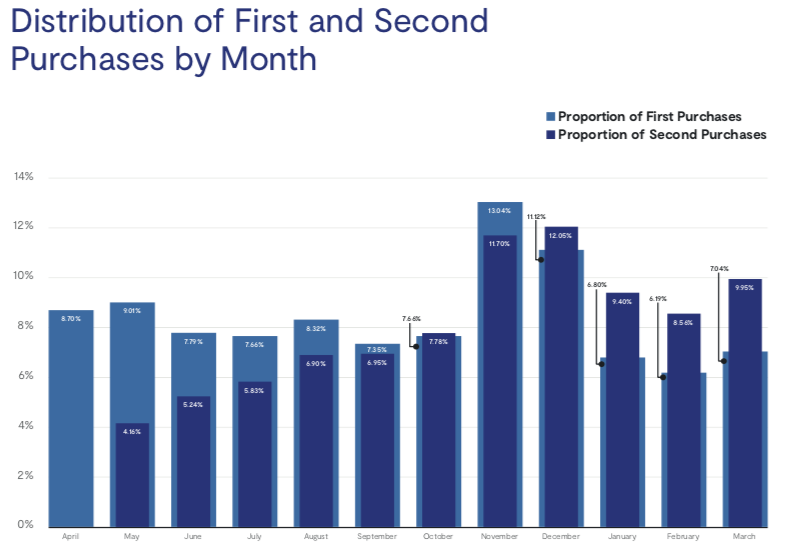
Seasonality in Retail Counts for More Than a One-Time Spike
‘Tis the season for… shopping.
We are now squarely in the busiest time of the year for retail. With blockbuster shopping events like Prime Day, back-to-school and Black Friday/Cyber Monday upon us, the seasonal nature of retail is on full display.
No doubt your team knows this better than anyone. But have you stepped back from the craziness of this time of year to look at the bigger picture of what these seasonal events make possible? If not, the time to do so is now.
Yes, Seasonal Retail Events Boost Near Term Revenue…
Performance during major seasonal events counts for a lot in retail. According to NRF, the holiday season can represent as much as 30% of annual sales for some retailers.
As a result of how much revenue rides on these major seasonal events, it’s critical for your marketing team to plan accordingly. Typically, this entails activities like planning campaigns, identifying which merchandise to push and building audiences. All of these efforts are essential to meeting (and exceeding) your near term revenue goals for the holiday events.
But they’re only the beginning of what it takes to reap the full benefits of major seasonal events.
…But the Biggest Returns from Seasonal Events are Long Term (If You Take the Right Approach)
Given the near term revenue boosts that typically come from seasonal events, it’s easy to emphasize the importance of the back half of the year. But it’s equally as important to look past each holiday rush to understand their long term impact.
Looking at a year’s worth of retail data reveals that the back half of the year delivers spikes in first-time buyers for brands. These spikes underscore the value of major seasonal shopping events. But on the tail of these first-time buyer spikes, we see increases in second-time buyers during the first half of the year.

This trend reveals the long term impact of seasonal shopping spikes. In fact, it offers a new lens through which to think about preparing for — and following up on — major retail events like Prime Day, back-to-school and Cyber Week.
Emphasizing customer acquisition during seasonal events (since this is when consumers are primed to shop and are more open to purchasing, particularly from new retailers) can pay dividends in the long run.
Of course realizing those long term benefits requires a thoughtful second purchase strategy designed to get these new shoppers to purchase again — potentially without the lure of a holiday. Whether it’s getting Black Friday shoppers to purchase in the middle of the winter or getting Prime Day shoppers to purchase on Black Friday, the key to success lies in timely messages with relevant content. Delivering on that imperative requires the right data.
How to Use Data to Turn Seasonal Retail Events Into a Year Round Advantage
Seasonal retail events provide a unique opportunity to engage and acquire new customers, but to make the most of those efforts your team must then focus on retaining those shoppers throughout the rest of the year. Solidifying loyalty with these shoppers comes down to running smart, relevant programs year round.
Data proves key to achieving this goal in two notable ways:
- Understanding performance during seasonal events. First, you need to understand who engaged with your marketing and made purchases during key seasonal events. This includes identifying the products and messages with which they engaged, how they engaged and when they did so. This insight should help you determine what works during these times of interest and how you can use that to your advantage going forward.
- Powering timely, relevant campaigns year round. Attracting shoppers year round often proves harder than it does during major shopping events, but it is possible with the right data model. You need a retail-specific data model that makes it easy to surface and take action on a combination of customer data (to determine who to target), behavior data (to determine when to target them) and product data (to determine the best products to show them). Using these types of data should help you build campaigns to target seasonal shoppers, particularly first-time buyers, in relevant ways long term to get them into a regular buying cadence.
Together, these two uses of data should empower your team to develop powerful campaigns year round that successfully turn one-time holiday shoppers into repeat customers.
Dive Into the Data
Ready to learn more about what shopper engagement with email looks like during key seasonal events and beyond? Download Bluecore’s 2019 Retail Email Benchmark Report to get comprehensive data on email engagement based on season, retail vertical, audience and more.






